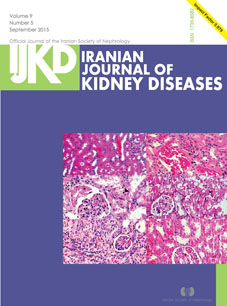Serum and Urine Leptin Concentrations in Children Before and After Treatment of Urinary Tract Infection
Abstract
Introduction. Urinary tract infection (UTI) among children is sometimes associated with anorexia and sometimes failure to thrive. Appetite-regulating hormones may be a causative factor. Leptin regulates appetite, food intake, and body weight via hypothalamic melanocortin-4 receptor. Leptin is also a potential cytokine for inflammation. The aim of this study was to evaluate serum and urine leptin before and after treatment of children with UTI.
Materials and Methods. In this before-after study, serum and urine leptin were measured in 40 patients with UTI at admission and 5 days after treatment. Pyelonephritis was suggested by signs and symptoms and confirmed with positive urine culture and dimercaptosuccinic acid renal scintigraphy. Other measurements included urinalysis, urine culture, urine creatinine level, complete blood count, erythrocyte sedimentation rate, C-reactive protein level and serum levels of urea, creatinine, glucose, cholesterol, and triglyceride.
Results. The mean serum leptin level was 6.85 ± 18.90 ng/mL before the treatment and 8.29 ± 18.30 ng/mL after the treatment, the difference of which was not significant (P = .64). There were significant correlations between serum leptin and age, weight, and C-reactive protein. Urine leptin levels were reduced significantly from 0.75 ± 0.82 ng/mL to 0.46 ± 0.27 ng/mL after the treatment (P = .03). A significant correlation was observed between urine leptin level with age and weight.
Conclusions. Serum leptin level did not change significantly after treatment of UTI, but urine leptin significantly decreased. Serum leptin level was higher in patients with anorexia in comparison with children with normal appetite; however, the difference was not significant.


